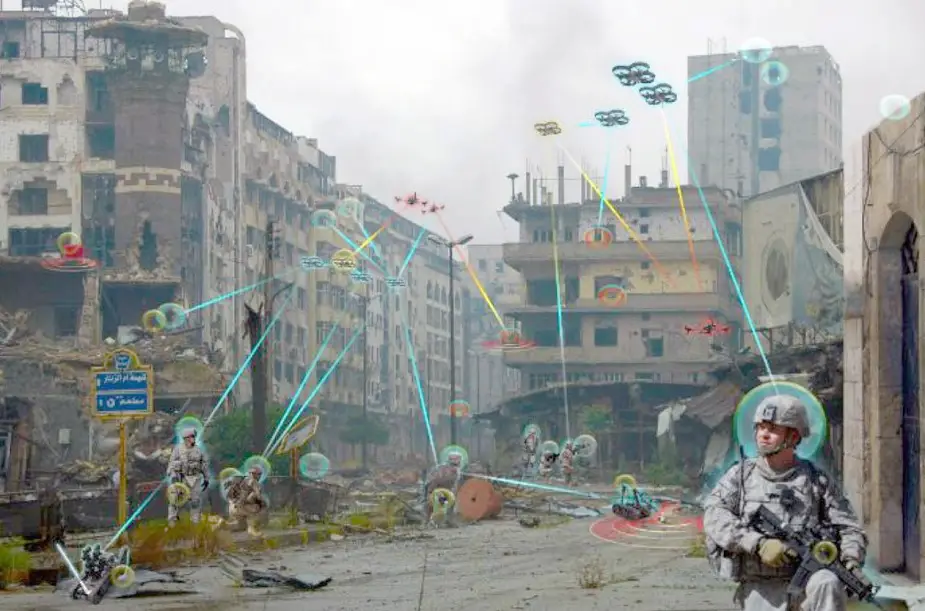In future combat, US Army units may deploy a large unmanned aerial system that can serve as a mothership capable of unleashing swarms of autonomous aircraft for various missions.
 "We must modernize the Army" said US Army Vice Chief of Staff Gen. James C. McConville.
"We must modernize the Army" said US Army Vice Chief of Staff Gen. James C. McConville.
(Picture source: US Army)
With near-peer competitors advancing their anti-access and area-denial capabilities, the Army requires innovative ways, such as this one, to penetrate through enemy defenses, said US Army Vice Chief of Staff Gen. James C. McConville. "Quite frankly, if you're going to some type of integrated air defense environment, I would prefer to have unmanned aircraft leading the way," he said.
McConville, an aviator who has piloted several Army helicopters, spoke Tuesday at a conference hosted by the Army Aviation Association of America, or Quad A. "We want industry to be listening," he said about the conference, "because we are telling them where we think we're going and what we want them to develop."
Senior leaders expect the future battlefield to have dispersed units operating in densely-populated areas, where they will be contested in multiple domains, such as the air.To be successful, they say, Soldiers need to be able to present several dilemmas to the enemy, which is why the Army developed its new concept of multi-domain operations.
"We must penetrate enemy anti-access and area-denial systems in order to allow follow-on forces to disintegrate," McConville said, "and find freedom of operational and tactical maneuver to exploit enemy forces."
FARA/FLRAA
The Future Vertical Lift Cross-Functional Team has started to rapidly develop two aircraft -- the Future Attack Reconnaissance Aircraft and Future Long Range Attack Aircraft, which aim to replace some AH-64 Apache and UH-60 Black Hawk helicopters, respectively.
For the FARA program, the team expects to award two vendors next year to create competitive prototypes that will perform a government-sponsored fly-off in 2023, Brig. Gen. Walter Rugen, the team's director, said in March.
Earlier this month, a request for information, or RFI, for the joint FLRAA program was released in an effort to further refine requirements for the Army, Special Operations Command and Marine Corps. Both programs are set to achieve initial fielding by 2028-2030, McConville said, adding no decisions have yet been made on how many will be procured.
The general, though, did say that air cavalry squadrons may receive FARA, while there would still be room for Apache helicopters. "So for the old cavalry folks, you can dust off your Stetsons and shine up your spurs," he said. "We see the Apache helicopter remaining in the attack battalions and being incrementally improved for some time into the future."
FLRAA, he added, will likely be fielded first to units with forced- or early-entry missions like the 101st Airborne Division (Air Assault), 82nd Airborne Division, 160th Special Operations Aviation Regiment (Airborne), and some National Guard units.
"We will acquire these aircraft with competitive prototyping processes to ensure the capability is there before we buy," he said. "We want to fly, we want to try, before we actually buy and we're looking for innovation from industry as we go forward."
Under development is also a new aviation engine through the Improved Turbine Engine Program as well as a 20 mm gun, he said.
Future aircraft will also require a Modular Open System Architecture. The general envisioned it to have something similar to how smartphones can easily receive and complete updates every few weeks. "We think this is absolutely critical because we want to be able to field new capabilities very quickly into our aircraft of the future," he said.
As a former OH-58 Kiowa pilot, McConville said it took too long to make updates on the reconnaissance helicopter. "You would have to rewrite the entire code and flight test it," he said. "It was a big deal just to change a screen thing, which we should be able to do in seconds."
While modernization efforts may affect other programs, the general said that change is necessary.
If senior leaders in the 1970s and 1980s failed to modernize the force, he said, Soldiers would still be flying AH-1 Cobra attack helicopters instead of Apaches and UH-1 Huey utility helicopters instead of Black Hawks. "We must modernize the Army," he said. "We're at that critical time right now and we feel that with the modernization priorities, the National Defense Strategy, where we see the world evolving, we must do that."
















